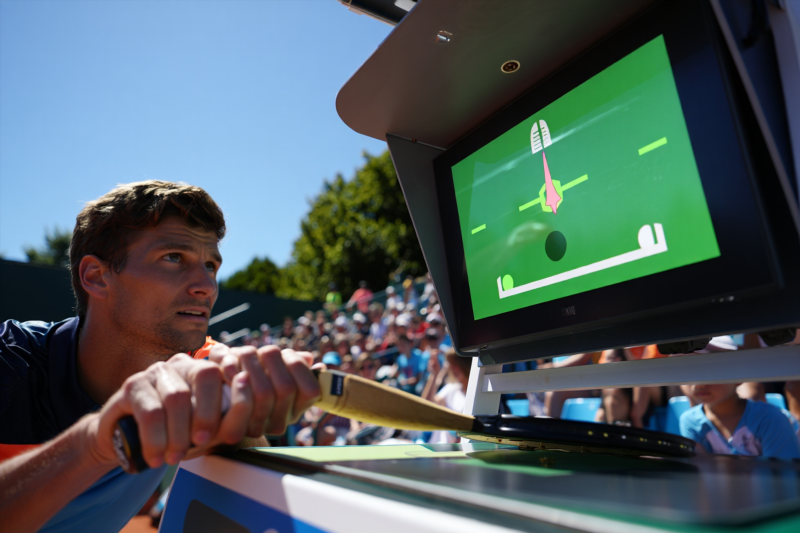
Future of Tennis Officiating How Electronic Calls Improve Fairness
Tennis, a sport rooted in tradition and precision, has long relied on human judgment for line calls. However, as technology advances, the landscape of officiating is undergoing a transformative shift. Electronic line calling systems are now at the forefront of this revolution, promising to enhance the accuracy and fairness of matches. This article explores how these innovations are shaping the future of tennis officiating and their profound impact on both players and fans.
The Role of Electronic Line Calling in Modern Tennis
What is Electronic Line Calling?
Electronic line calling utilizes sophisticated systems such as Hawk-Eye and similar technologies to determine whether a ball lands in or out with high precision. These systems use multiple high-speed cameras and computer algorithms to analyze the trajectory of the ball, providing exact decisions in real-time.
Key Features of Electronic Line Calling Systems
- High-precision tracking: Cameras track the ball’s movement with millimeter accuracy.
- Instantaneous decisions: Immediate feedback during play minimizes delays.
- Remote review capability: Referees can make quick rulings without needing to consult solely on human judgment.
- Visual aids: On-screen graphics show the trajectory and landing spot, enhancing viewer understanding.
Enhancing Fairness: Benefits of Electronic Line Calling
Increased Accuracy and Consistency
One of the primary advantages of electronic systems is their unparalleled accuracy. Human line judges, despite their experience, are susceptible to fatigue and subjective bias. Electronic calls eliminate these inconsistencies, ensuring fair outcomes based solely on factual data.
Reducing Controversies and Disputes
Disputed calls can lead to on-court conflicts, affecting players’ focus and fans’ enjoyment. Electronic reviews provide clear, objective evidence, reducing disputes and fostering a more respectful playing environment.
Boosting Player Confidence
Players can trust that line calls are consistent and impartial, allowing them to focus solely on their performance rather than second-guessing officiating decisions.
The Impact on Future Tennis Matches
Increasing Spectator Engagement
With visual graphics and instant replays, audiences gain a richer understanding of plays and decisions. This transparency boosts engagement and maintains the sport’s integrity in the digital age.
Promoting Fair Competition
By minimizing human error, electronic line calling ensures that matches are decided by skill, strategy, and mental toughness, rather than officiating mistakes.
Integrating Advanced Technologies
Looking ahead, electronic officiating will continue to evolve, incorporating artificial intelligence for even more nuanced decision-making and predictive analytics to anticipate critical moments.
Addressing Common Questions
Will electronic line calling replace human judges altogether?
While technology significantly reduces the reliance on human judgment, referees still oversee matches for broader decisions such as challenge rulings and rule enforcement. The integration enhances accuracy without eliminating the human element entirely.
How reliable is electronic line calling in high-stakes matches?
Extensive testing and widespread adoption have proven that electronic systems provide highly reliable and consistent calls. Major tournaments routinely utilize these systems to ensure fairness.
What challenges remain in adopting electronic officiating?
- Technical failures or glitches
- Cost and infrastructure requirements
- Acceptance by players, officials, and traditionalists
Ongoing innovations aim to address these hurdles, ensuring seamless integration into the sport.
The Future Outlook
Continuous Technological Innovation
Advances in machine learning and AI will lead to even more precise and adaptive officiating systems, further reducing errors and biases.
Broader Adoption Across Levels
From grassroots tournaments to Grand Slams, expanding electronic officiating promotes consistency and fairness at all levels.
Enhancing the Spectator Experience
Augmented reality and real-time decision displays will make matches more interactive and transparent, fostering greater viewer trust.
The future of tennis officiating is undeniably intertwined with technological innovation. Electronic line calling systems are revolutionizing the game by improving accuracy, fairness, and transparency. As these technologies become more sophisticated and universally adopted, players and fans alike can look forward to a more equitable and exhilarating sport. Embracing this evolution not only honors the sport’s rich tradition but ensures its integrity for generations to come.
Ready to experience the future of tennis officiating? Stay tuned for upcoming innovations and see how technology continues to serve fairness and excitement on the court.


